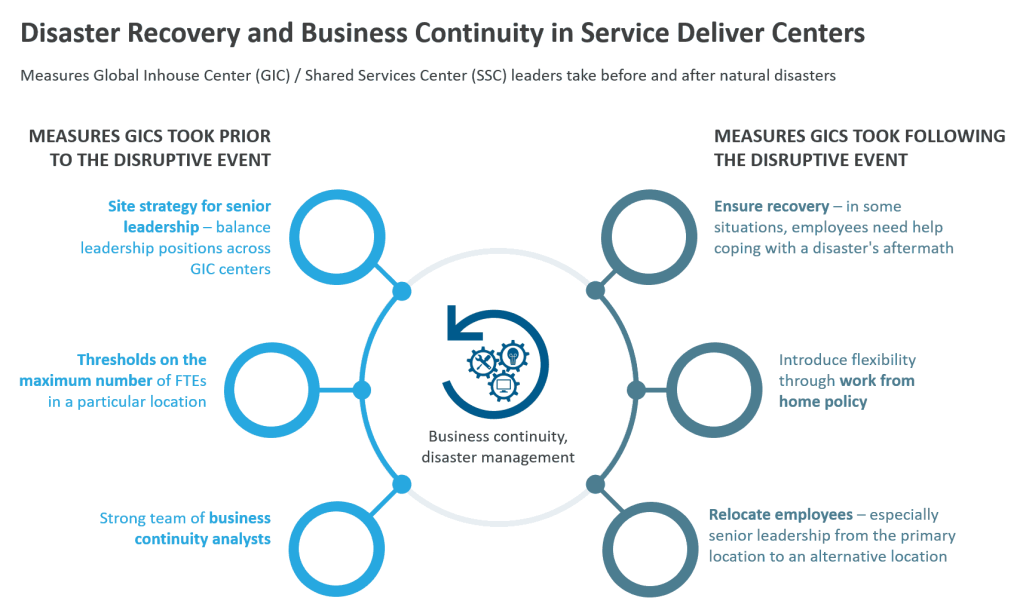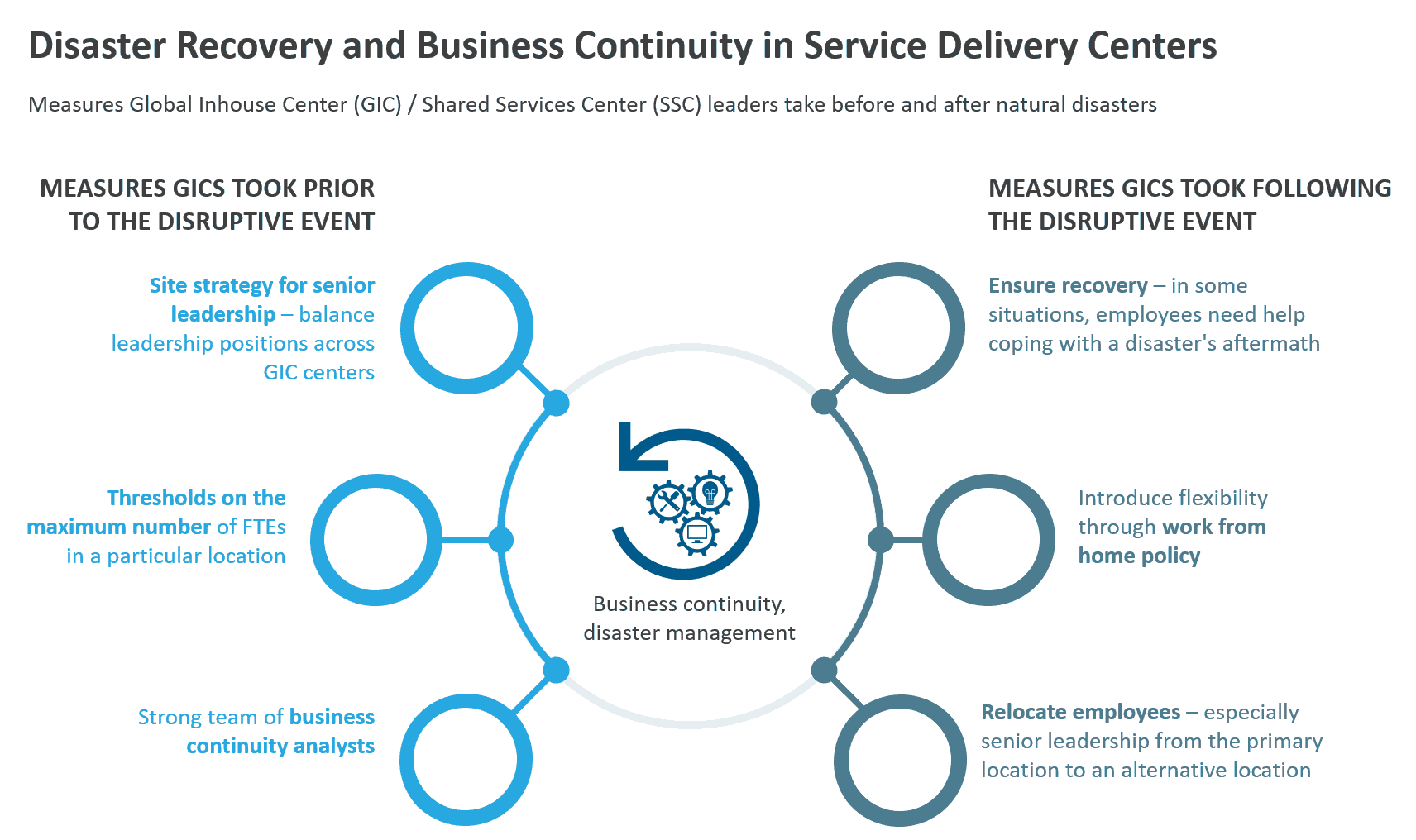Blog
A World Caught Unaware: Business Continuity and Disaster Recovery in the Wake of COVID-19 | Blog

This is the fourth in a series of blogs that explores a range of topics related to these issues and will naturally evolve as events unfold and facts reveal themselves. The blogs are in no way intended to provide scientific or health expertise, but rather focus on the implications and options for service delivery organizations.These insights are based on our ongoing interactions with organizations operating in impacted areas, our expertise in global service delivery, and our previous experience with clients facing challenges from the SARS, MERS, and Zika viruses, as well as other unique risk situations.
A virus originating in China has brought life to a standstill around the globe – and that includes service providers and shared services centers or Global In-house Centers (GICs). From delays in procuring office supplies (most of them sourced from China) and rescheduling of important meetings/events to the threat the virus poses to human capital, the risks have pushed most firms to revisit their business plans and potentially prepare for another worldwide recession. The virus spread has also been a wakeup call for providers and shared services centers, testing their preparedness in terms of business continuity and disaster recovery. In fact, it has made some firms comprehend the need to balance their cost-competitive mindset with a risk-competitive one.
Some organizations are well prepared and offer examples for others to follow. In this blog, we take a look at some of these noteworthy business continuity and disaster recovery measures, based on our conversations with more than 20 GICs and service providers globally. Strategies that stand out in particular include:
- Site-based strategies for senior leadership – A few firms have balanced their leadership positions across centers and geographies to ensure that all senior roles for critical processes are not based in a single location
- Headcount thresholds – Some firms have thresholds on the maximum number of Full Time Equivalents (FTEs) in a particular location – both at a city level and country level
- Dedicated resilience management groups – Some firms maintain a full-fledged business continuity team to manage crises and their responses
- Robust work placement strategies – A number of firms ensure that critical activities are spread across locations
For example, a UK-headquartered bank (with GICs across multiple locations) has an intra-city, inter-city, and inter-country Business Continuity Planning (BCP) strategy. The bank follows a robust BCP operating procedure by: (A) assessing a service’s/process’ business impact /criticality if work were to stop due to reputational, financial, or customer-related reasons, among others); and, (B) identifying the work location based upon criticality – highly critical services/processes are typically distributed across two countries. To understand this better, the company invokes:
- Intra-city BCP for extremely short-term events, such as shutdowns for three to four hours due to maintenance work at a site
- Inter-city BCP for short-term or limited impact events affecting a city, for example, transport strikes
- Inter-country BCP for critical events such as natural disasters. For instance, during the recent floods in Chennai, India, the bank moved critical processes such as risk and analytics to other GIC locations, such as Poland

In the aftermath of the coronavirus outbreak, we are likely to see significantly strengthened business continuity plans – those that take into account talent availability, work placement strategy, infrastructure availability, and newer metrics to manage performance. In particular, we encourage enterprises to explore answers to the following questions to develop robust business continuity plans:
- Can the virtual model emerge as an effective alternative to physical locations? What does it mean from an infrastructure perspective?
- How can automation solutions be deployed to manage down time?
- What additional features need to be added to office communication tools and applications to enhance collaboration?
- Is there a need to adopt new metrics to monitor resources working from home for an extended period of time? What should these metrics be? How will they co-exist with privacy laws?
Visit our COVID-19 resource center to access all our COVD-19 related insights.